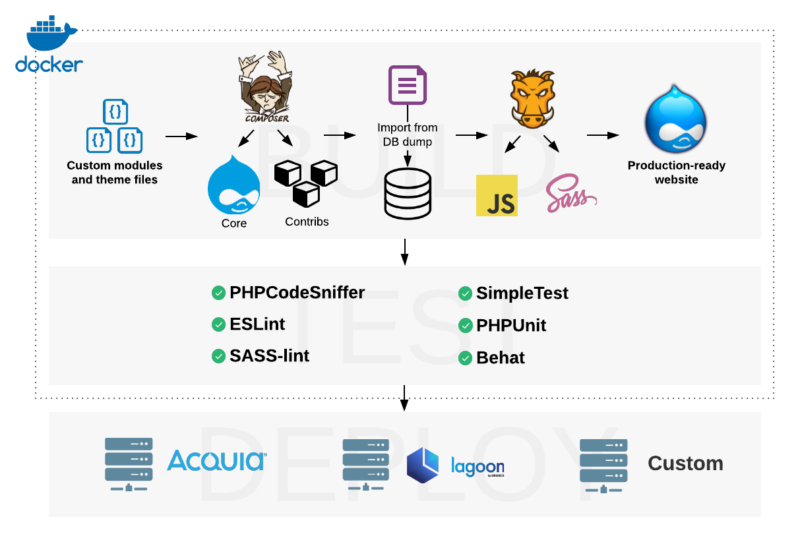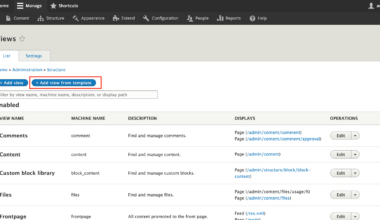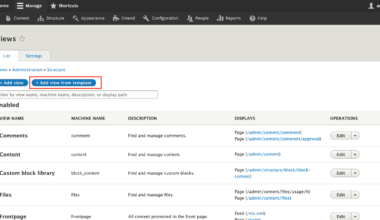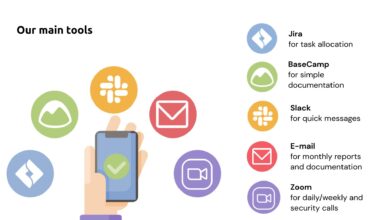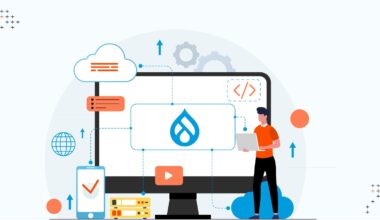Introduction to Drupal Continuous Integration
As a developer, you know how challenging it can be to manage and maintain a Drupal website. One of the biggest challenges is ensuring that your website code is always up-to-date and functioning properly. This is where Drupal Continuous Integration (CI) comes in.
Drupal CI is a process that automates the building, testing, and deployment of Drupal applications. It ensures that your website code is always updated and functioning correctly, by continuously testing and integrating new code changes. This process helps to minimize errors, reduce development time, and improve the overall quality of your Drupal website.
To get started with Drupal CI, you need to set up a continuous integration environment. This includes a server that will host your Drupal website, a version control system, and a continuous integration tool. The most popular version control system for Drupal is Git, while the most popular continuous integration tool is Jenkins.
Once you have set up your environment, you can start building and testing your Drupal application. Building involves compiling your code into an executable form, while testing involves running automated tests to ensure that your code is functioning correctly. There are several tools that can help you with building and testing, including PHPUnit, Behat, and Selenium.
To ensure that your Drupal CI process is effective, there are several best practices that you should follow. These include using a consistent coding style, using version control for all code changes, and ensuring that your tests cover all critical functionality of your website.
In conclusion, Drupal Continuous Integration is an essential process for any developer who wants to ensure that their Drupal website is always up-to-date and functioning correctly. By following best practices and using the right tools, you can streamline your development process and improve the overall quality of your Drupal website.
Setting up a Continuous Integration Environment
To set up a continuous integration environment for Drupal, you need a server to host your website, a version control system, and a continuous integration tool. Here’s a step-by-step guide to setting up your environment:
1. Choose a hosting provider that supports Drupal, such as Acquia, Pantheon, or AWS. Make sure that the server meets the requirements for the latest version of Drupal.
2. Install Git on your server. Git is a popular version control system that allows you to track changes to your code and collaborate with other developers. You can download Git from the official website.
3. Create a Git repository for your Drupal website. This will allow you to track changes to your code and collaborate with other developers. You can create a Git repository on popular Git hosting platforms like GitHub, Bitbucket, or GitLab.
4. Install Jenkins on your server. Jenkins is a popular continuous integration tool that can automate the building, testing, and deployment of your Drupal website. You can download Jenkins from the official website.
5. Configure Jenkins to build and test your Drupal website. You can use Jenkins plugins like Git Plugin, PHP Plugin, and PHPUnit Plugin to automate the building and testing process. You’ll need to create a Jenkins job that pulls your code from Git, compiles it, and runs automated tests.
6. Set up a deployment pipeline to deploy your code to a staging or production server. You can use Jenkins plugins like Deploy Plugin or SSH Plugin to automate the deployment process.
7. Configure Jenkins to send notifications to your team if a build fails. You can use Jenkins plugins like Email Extension Plugin or Slack Plugin to send notifications to your team if a build fails.
By following these steps, you can set up a continuous integration environment for your Drupal website. This will help you to automate the building, testing, and deployment process, and ensure that your website code is always up-to-date and functioning properly.
Building and Testing Drupal Applications
Now that you have set up your continuous integration environment, it’s time to start building and testing your Drupal application. Here are some steps to get you started:
1. Use a consistent coding style: It’s important to use a consistent coding style throughout your Drupal application. This makes it easier for other developers to read and understand your code. You can use coding standards like Drupal Coding Standards or PSR-2 to ensure consistency.
2. Use version control for all code changes: Use Git to track all code changes, including bug fixes and new features. This makes it easier to revert to a previous version of your code if something goes wrong.
3. Use automated testing tools: Drupal has several automated testing tools like PHPUnit, Behat, and Selenium that can help you test your code. These tools can run automated tests to ensure that your code is functioning correctly, and can save you time and effort.
4. Test all critical functionality: Make sure that your tests cover all critical functionality of your website, including user registration, login, and checkout. This will help you to catch any bugs or errors before they go live.
5. Use continuous integration tools to automate the building and testing process: Jenkins can automate the building and testing process for your Drupal application. You can create a Jenkins job that pulls your code from Git, compiles it, and runs automated tests. This ensures that your code is always up-to-date and functioning properly.
6. Use a staging server to test changes before deploying to production: Use a staging server to test any changes before deploying them to production. This ensures that any bugs or errors are caught before they go live.
By following these steps, you can build and test your Drupal application efficiently and effectively. Automated testing tools and continuous integration tools like Jenkins can save you time and effort, and help you to catch any bugs or errors before they go live.
In conclusion, building and testing your Drupal application is an essential part of the continuous integration process. By using automated testing tools and continuous integration tools like Jenkins, you can ensure that your code is always up-to-date and functioning properly. Don’t forget to use a consistent coding style, version control, and test all critical functionality to ensure the overall quality of your Drupal website.
Best Practices for Continuous Integration with Drupal
Continuous integration is a vital part of the development process. To ensure that your Drupal CI process is effective, here are some best practices to follow:
1. Automate as much as possible: The more you can automate, the more consistent and reliable your process will be. Use continuous integration tools like Jenkins to automate the building, testing, and deployment of your Drupal website.
2. Use a consistent development environment: Use a consistent development environment across your team to ensure that everyone is working with the same tools and versions. This will reduce the risk of compatibility issues and make it easier to collaborate.
3. Test early, test often: Test your code as early and as often as possible to catch any issues before they become larger problems. Use automated testing tools like PHPUnit, Behat, and Selenium to run tests and ensure that your code is functioning correctly.
4. Use version control for all code changes: Use Git to track all code changes, including bug fixes and new features. This makes it easier to revert to a previous version of your code if something goes wrong.
5. Use a staging environment: Use a staging environment to test any changes before deploying them to production. This ensures that any bugs or errors are caught before they go live.
6. Use a continuous feedback loop: Use a continuous feedback loop to keep everyone on the same page. Use tools like Slack or email notifications from Jenkins to keep your team updated on the status of the build and any issues that arise.
7. Follow coding standards: Follow coding standards like Drupal Coding Standards or PSR-2 to ensure consistency across your codebase. This will make it easier for other developers to read and understand your code.
By following these best practices, you can streamline your Drupal CI process and ensure that your code is always up-to-date and functioning properly. Automated testing tools and continuous integration tools like Jenkins can save you time and effort, while following coding standards and using version control will improve the overall quality of your Drupal website.
Final Thoughts on Drupal Continuous Integration
Drupal Continuous Integration is an essential process for any developer who wants to ensure that their Drupal website is always up-to-date and functioning correctly. By following best practices and using the right tools, you can streamline your development process and improve the overall quality of your Drupal website.
One of the key benefits of Drupal CI is that it helps to minimize errors and reduce development time. By automating the building, testing, and deployment process, you can catch bugs and issues early on, before they become larger problems. This can save you time and effort in the long run, and improve the overall quality of your Drupal website.
Another benefit of Drupal CI is that it improves collaboration and communication among team members. By using version control and continuous integration tools like Jenkins, you can ensure that everyone is working with the same codebase and the same tools. This reduces the risk of compatibility issues and makes it easier to collaborate effectively.
When implementing Drupal CI, it’s important to follow best practices like automating as much as possible, testing early and often, and using version control for all code changes. By following these best practices, you can ensure that your Drupal website is always up-to-date and functioning correctly.
In conclusion, Drupal Continuous Integration is an essential process for any developer who wants to ensure the overall quality of their Drupal website. By following best practices and using the right tools, you can streamline your development process, catch bugs and issues early on, and improve collaboration and communication among team members. So, start implementing Drupal CI today and enjoy a hassle-free development process for your Drupal website.
